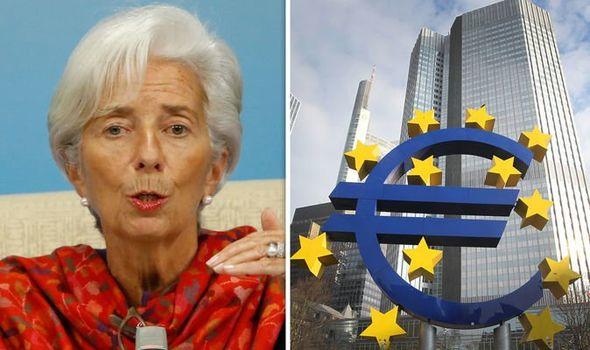The appointment of Christine Lagarde as president of the ECB has been greeted with euphoria by financial markets. That reaction in itself should be a warning signal.
When risky assets soar in the middle of a huge bubble due to a central bank appointment, the supervising entity should be concerned.
Lagarde is a lawyer, not an economist, and a great professional, but the market probably interprets correctly is that the European Central Bank will become even more dovish. Lagarde, for example, is a strong advocate of negative rates.
Lagarde and Vice President De Guindos have warned of the need to carry out measures to avoid a possible financial crisis, proposing different mechanisms to mitigate the shocks created by excess risk. Both are right, but that search for mechanisms to work as shock buffers runs the risk of being sterile when it is the monetary policy that encourages excess. When the central bank solves a financial crisis by absorbing the excess risk that the market once took it does not reduce it, it only disguises it.
Supervisors ignore the effect of risk accumulation because they perceive it as necessary collateral damage to the recovery. Risk accumulates precisely because it is encouraged.
Draghi said that monetary policy is not the correct instrument to deal with financial imbalances and macroprudential tools should be used. However, it is the monetary policy which is causing those imbalances when an extraordinary, conditional and limited measure becomes an eternal and unconditional one.
When monetary policy disguises and encourages risk, macroprudential measures are simply ineffective. There is no macroprudential measure that mitigates the risk created by negative rates and almost three trillion of asset purchases. More than half of European debt has negative returns and the ECB must maintain the repurchase of maturities, injections of liquidity and even announce a new program of quantitative easing in the face of the lack of sufficient demand in the secondary market for those negative yielding bonds. That is a bubble.
Risk builds up slowly and happens instantaneously. That is what the central planner does not seem to want to understand and the reason why stress tests and macroprudential measures fail in the midst of monetary stimuli. Because they start from a fallacious base: Ceteris paribus and that the already accumulated imbalances are manageable.
When most Eurozone countries finance themselves at negative rates for up to seven to ten years, there is no reason to maintain current rates and stimuli.
The central planner can say that bond yields are low due to market demand, but when the Central Bank supplants the market by injecting, repurchasing maturities and announcing more monetary stimuli, the placebo effect in the real economy is imperceptible and the risk in financial assets is huge. The huge injection of money supply goes to other risk assets in search of a diminishing yield.
The eurozone has been in stagnation for several months, with many leading indicators worsening, and it is not due to lack of stimulus, but due to excess.
64% of the sovereign debt of the eurozone hs negative yields. Five trillion euros . Completely unjustified looking at solvency, liquidity or growth ratios.
Junk bonds are at the lowest yield in thirty years, while the rating agencies warn that the solvency and liquidity ratios have not improved. The BIS warned of the increase of zombie companies, eternally refinanced at low rates despite not being able to cover their interest expenses with operating profit. Meanwhile, companies on the verge of bankruptcy are financed at rates of 3.5-4%.
The multiples paid for infrastructure assets have soared in little more than half a decade and now no one is surprised to see 19 times EBITDA paid for assets driven by low rates and cheap debt.
Excess liquidity reached 1.2 trillion euros. It has multiplied sevenfold since the launch of the repurchase program.
The debt of non-financial companies in the eurozone remains above 78% of GDP, according to Standard and Poor's, above the cycle maximum of the fourth quarter of 2008.
Many say that nothing has happened yet, although it is more than debatable, according to bankruptcies of financial entities and increase of zombie companies. However, the fact that there has not been a massive financial crisis yet does not mean that the bubble is not being inflated. And when that bubble is in several assets at once, there are no macroprudential measures to cover the risk.
The problem of central planners is one of diagnosis. They think that if credit does not grow as much as they think it should grow and investment and growth are not what they estimated, it is because more stimulus is needed. Many ignore the effect of overcapacity, excess debt and demographics while carrying out the greatest transfer of wealth from savers and the productive economy to the indebted.
Calls for prudence and risk analysis measures would be much more effective if misallocation of capital was not encouraged by the policy itself. We must be aware that lower rates and more liquidity will not improve the economy, but they may generate a dangerous boomerang effect on risk assets.

Commenti
Posta un commento